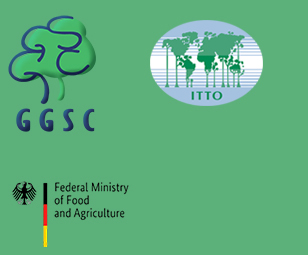
Indonesia
Indonesia–EU trade deal paves way for $2.8B boost, job growth
Indonesia and the European Union signed a landmark trade agreement on Sept. 23, aiming to eliminate tariffs on nearly all goods and deepen cooperation in services and investment, marking a new chapter in economic relations between the two regions.
The Indonesia–European Union Comprehensive Economic Partnership Agreement (IEU-CEPA) covers over 98% of tariff lines—representing nearly 99% of the total import value—and is expected to raise Indonesia’s national income by US$2.8 billion.
It also aims to create new jobs, reduce poverty, and strengthen the role of labor-intensive sectors including palm oil, coffee, textiles, apparel, footwear, and furniture.
Indonesia readies strategy for EU deforestation regulation
The Indonesian Government prepares strategic measures in response to the European Union Deforestation Regulation (EUDR) which will come into effect by year-end.
The Trade Ministry's director general for international trade negotiation Djatmiko Bris Witjaksono said that the ministry has coordinated with relevant stakeholders to assess the impact of the policy on Indonesia's top export commodities.
The ministry and its stakeholders, including businesses, will improve the traceability system to ensure that the main supply chain of these commodities meets the policy, such as being free of deforestation and employing geolocation, Witjaksono noted.
Moreover, the government consistently improves national standards and employs globally recognized certification schemes to carry out certifications for main commodities, like palm oil, rubber, coffee, cocoa, and wood.
Indonesia targets global hub status in furniture innovation
“According to data from Customs and Statistics Indonesia (BPS) in 2025, furniture exports rank second in the handicraft subsector, reaching around 12.2 percent, surpassing musical instruments and parts, children’s toys, and paper,” Deputy for Creativity and Design at the Ministry of Creative Economy Yuke Sri Rahayu said at the opening of IFMAC and WoodMac 2025 at JIExpo Kemayoran, Jakarta.
Yuke highlighted that this achievement underscores Indonesia’s readiness to become a center of creative industry innovation in Asia as well as a powerhouse in furniture exports.
To strengthen Indonesia’s position as a hub for furniture production and innovation, the ministry is opening opportunities for collaboration with global companies in wood processing and hardware.
Housing KUR program major opportunity for MSMEs: Minister
Minister of Cooperatives and Small and Medium Enterprises (MSMEs) Maman Abdurrahman stated that the People’s Business Credit (KUR) program for the housing sector, newly allocated under President Prabowo Subianto’s administration, presents a significant opportunity for MSMEs.
During a visit to the ANTARA Heritage Center, Maman said the program is not only aimed at providing decent housing for the public but also opens wide opportunities for businesses in the housing sector, such as brick and sand producers, construction material suppliers, and consulting services.
The KUR for the housing sector is a government initiative allocating Rp130 trillion this year to help citizens access housing. The program is designed to address the housing supply gap while boosting national economic growth. Of the total allocation, Rp117 trillion is designated for supply-side activities, including housing developers, construction service providers, and MSMEs in building materials. Meanwhile, Rp13 trillion is directed toward demand-side financing, allowing individual MSMEs to use the credit to support their businesses.
Chairman of the Indonesian Chamber of Commerce and Industry (Kadin) Anindya Bakrie said the housing KUR program has the potential to create up to nine million jobs. This figure covers not only direct employment in construction but also the ripple effects across related industries, including cement, steel, wood, and transportation services.
Malaysia
Furniture industry urged to diversify
Malaysia’s furniture industry must urgently diversify its export markets and not rely too heavily on traditional hubs, said Deputy Plantation and Commodities Minister Datuk Chan Foong Hin.
He said there is a need to explore emerging markets where demand for sustainable, high-quality furniture is increasing and business ties are less exposed to geopolitical risks.
“Strengthen your local foundation. Building solid partnerships with Malaysian buyers — from developers and retailers to designers — will provide the stability, agility and resilience our industry needs to withstand global challenges,” he said in his speech at the Malaysia Furniture Furnishings Market (MFFM) 2025.
Chan said three megatrends would shape competitiveness in the furniture sector, namely sustainability and environmental, social and governance (ESG) practices, digital transformation, and innovation in design.
Malaysia's wood products industry faces challenges
A report from Hong Leong indicates that the Malaysian timber sector experienced a challenging first half of 2025, with headwinds such as weak global demand, cost pressures, and the depreciation of the US dollar.
The decline in the U.S. dollar had particularly adversely impacted Malaysia's export-oriented wood manufacturers. The report revealed that the U.S. Dollar Index fell by approximately 11% in the first half of 2025, marking its worst first-half performance since 1973. Key drivers behind the dollar's weakness include tariff policies, pressure from U.S. President Trump on the Federal Reserve to cut interest rates, and mounting market concerns over rising U.S. fiscal deficits and debt levels.
Malaysia property market outlook for 2H 2025 remains ‘cautiously optimistic’
“Malaysia’s property market outlook for 2H 2025 remains cautiously optimistic, says International Real Estate Federation (FIABCI) Malaysia, citing stable transactions, rising house prices, and government housing initiatives despite oversupply risks.”
From 1H 2021 to 1H 2025, Malaysia’s property transaction volume and value recorded consistent performance. While growth has slowed, the steady trend reflects stability in the market.
In terms of supply, a total of 23,380 new residential units were launched, with 24% sold. However, unsold completed properties remain a concern. As of 1H 2025, there were 26,111 units valued at RM16.44 billion still in stock, particularly in mid-range segments and certain states.
Thailand
Thailand's real estate market cools down
Prasert Taedullayasatit, president of the Thai Condominium Association, said the property sector remains a key driver of GDP, accounting for 8-12% of the economy and supporting over 1 million jobs. However, since the third quarter of 2024, home and condominium sales have plunged to a 10-year low. While many had expected a rebound in the second half of 2025, second-quarter figures fell short of projections, highlighting a deeper-than-expected downturn.
The associations have therefore proposed three short-term “Quick Win” measures: expand transfer and mortgage fee reductions without limit; cut policy interest rate by 0.50%; and additional short-term plans.
Thai furniture manufacturer calls for not abandoning the U.S. market
As the United States imposes new tariffs on imported wooden furniture, Thai wooden furniture manufacturer Deesawat Industries called on domestic companies not to withdraw from the U.S. market, but to enhance their competitiveness there.
On 29 September, U.S. President Trump announced 10% tariffs on imports of softwood timber and lumber, as well as 25% levies on kitchen cabinets, bathroom vanities and upholstered wooden furniture, with further increases set to take effect on 1 January next year.
A director from Deesawat stated that these new tariffs would not only affect Thailand's exports to the United States but also create uncertainties for exports by other countries.
Thailand’s furniture & parts export update (Jan–Jul 2025)
Data from Thai Furniture Association (TFA) shows that Thailand’s total export value for furniture and parts reached 27,564.99 million baht in the first seven months of 2025, marking a 13.67% growth compared to the same period in 2024.
Top 5 Export Destinations:
1. USA — 3,470.01 million baht
2. Japan — 1,034.12 million baht
3. Malaysia — 996.50 million baht
4. China — 873.86 million baht
5. Australia — 730.09 million baht
This strong double-digit growth highlights Thailand’s competitive edge in the global furniture market. The steady increase in exports shows rising international demand, opening new doors for Thai businesses to strengthen trade and partnerships worldwide.
China
China's plywood exports hit record high
In 2024, China's export volume of plywood products hit a record high, reaching 13.15 million cubic meters, marking a year-on-year increase of 22.80% and setting a new decade-high for exports of such products. However, the export value grew by only 9.45%.
In 2024, exports of ordinary plywood rose by 21.3%, while the unit price fell by 11.83%. The decline in product prices reflects intensifying market competition and significant cost pressures faced by enterprises. Meanwhile, exports of blockboard and laminated veneer lumber (LVL) saw substantial growth, suggesting a surge in demand from emerging markets, particularly with LVL exports surging by 164%. In contrast, bamboo plywood exports declined in volume but increased in price.
Six authorities join forces to promote steady growth in the building materials industry
On September 24, six authorities, including the Ministry of Industry and Information Technology and the Ministry of Natural Resources, jointly issued the "Work Plan for Stabilizing Growth in the Building Materials Industry (2025-2026)", which sets targets such as achieving over 300 billion yuan in revenue from green building materials in 2026.
The Plan proposes demand-side measures such as promoting the use of green building materials in rural areas and matching the "Good Housing" initiative to stimulate the domestic market.
China imported 4.029 million cubic meters of logs and sawnwood in August
Data from China’s General Administration of Customs revealed that China imported a total of 4.029 million cubic meters of logs and sawnwood in August 2025, marking a 13.4% decline from July and a 20.2% decrease compared to the same period in 2024. This also represented the sixth consecutive month of year-on-year decline and the fifth straight month of month-on-month contraction.
In terms of import value, the total import value of logs and sawnwood in August reached 5.86 billion yuan, down 23.3% year-on-year.
Overall, from January to August 2025, China imported a total volume of 37.508 million cubic meters of logs and sawnwood, a 13.2% decrease from the 43.222 million cubic meters imported during the same period in 2024. And the cumulative import value of logs and sawnwood during the first eight months reached 54.54 billion yuan, down 15.6% year-on-year.

| E-mail:ggsc@itto-ggsc.org | Tel:86-10-62888626 |


Sigh Up for Emails |
|